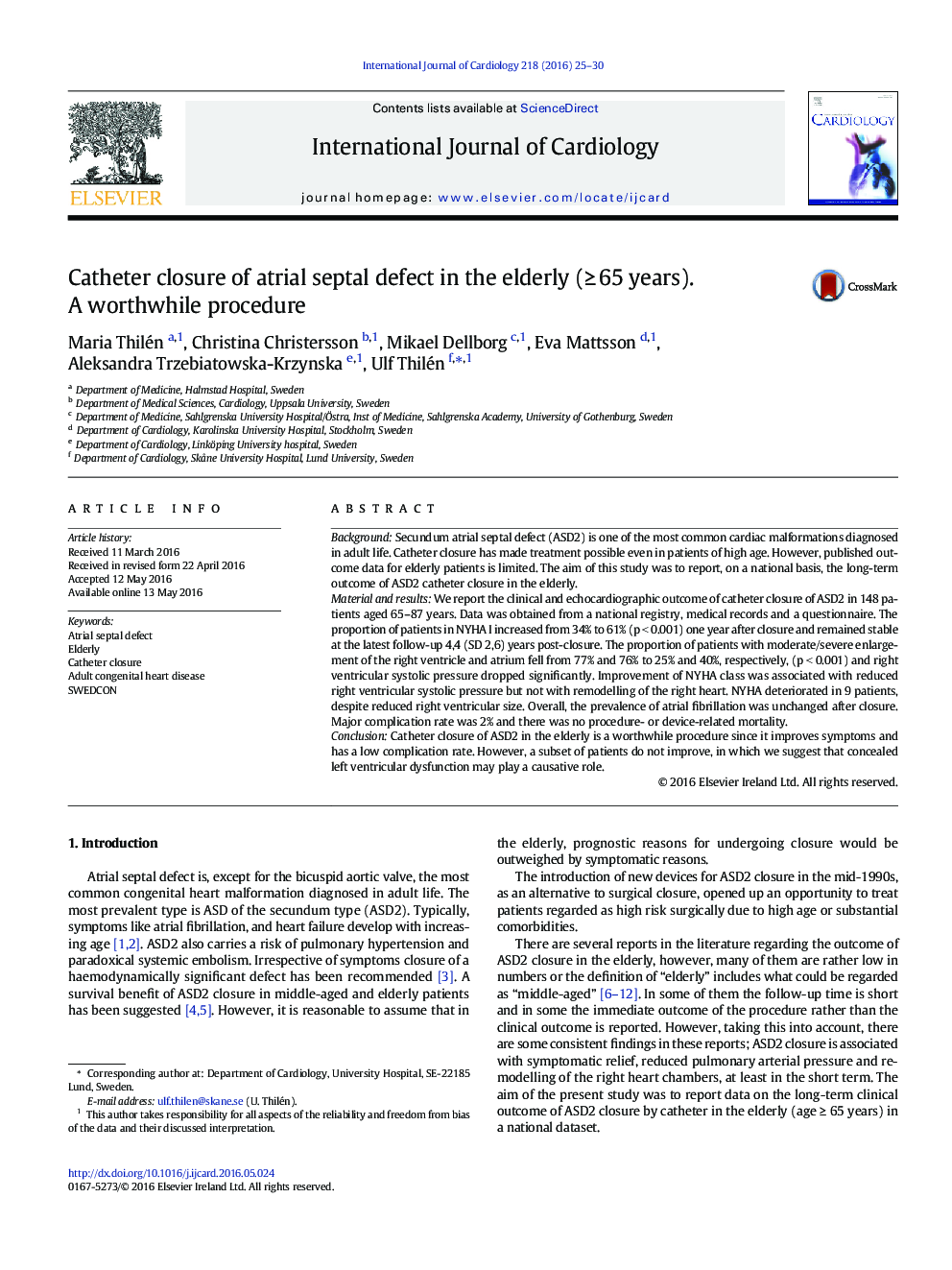| Article ID | Journal | Published Year | Pages | File Type |
|---|---|---|---|---|
| 5964094 | International Journal of Cardiology | 2016 | 6 Pages |
BackgroundSecundum atrial septal defect (ASD2) is one of the most common cardiac malformations diagnosed in adult life. Catheter closure has made treatment possible even in patients of high age. However, published outcome data for elderly patients is limited. The aim of this study was to report, on a national basis, the long-term outcome of ASD2 catheter closure in the elderly.Material and resultsWe report the clinical and echocardiographic outcome of catheter closure of ASD2 in 148 patients aged 65-87 years. Data was obtained from a national registry, medical records and a questionnaire. The proportion of patients in NYHA I increased from 34% to 61% (p < 0.001) one year after closure and remained stable at the latest follow-up 4,4 (SD 2,6) years post-closure. The proportion of patients with moderate/severe enlargement of the right ventricle and atrium fell from 77% and 76% to 25% and 40%, respectively, (p < 0.001) and right ventricular systolic pressure dropped significantly. Improvement of NYHA class was associated with reduced right ventricular systolic pressure but not with remodelling of the right heart. NYHA deteriorated in 9 patients, despite reduced right ventricular size. Overall, the prevalence of atrial fibrillation was unchanged after closure. Major complication rate was 2% and there was no procedure- or device-related mortality.ConclusionCatheter closure of ASD2 in the elderly is a worthwhile procedure since it improves symptoms and has a low complication rate. However, a subset of patients do not improve, in which we suggest that concealed left ventricular dysfunction may play a causative role.
